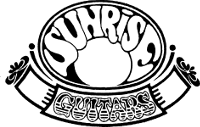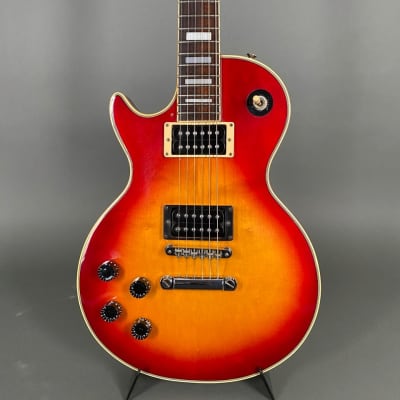
product types:
- electric guitars
Information:
The Sunrise Guitar story starts with Patrick Murphy, who received training as a luthier while stationed in Germany and also worked with classical guitar maker Rainer Krempel. In 1971, he opened the Instrument Repair Shop (IRS) in “the back closet room” of the Sound Factory (later ProCo Sound, Inc.) on East Kalamazoo Avenue. In his words,
“Originally, I did no work on electronics, as I wasn’t too impressed by them. I was a true-blue acoustic person. Later, I figured out that if I wanted the shop to remain viable, I had to expand to electronics.”
To help with this, he hired Tim Shaw, and they were soon approached to build a custom doubleneck solidbody electric guitar. As the piece came together in their studio, other artists were impressed with what they saw, and new custom orders began to come in. The first few dozen custom guitars were stamped under the name Shaw-Murphy.Chuck Burge and Loring Janes eventually joined the team, and with them came the new brand: Sunrise Guitars.
A total of 107 guitars were built, with Burge working on design and initial construction; Murphy on sanding, lacquer, buffing, and frets; Shaw on the now sought-after Sunrise flattop pickups and wiring; and Janes on assembling. All but about 35 guitars went to dealers across the country and sold for about $1,000 each. The rest were customs for individual players, including the famous Texas-shaped guitar for Billy Gibbons of ZZ Top.Offering a “unique combination of dependability and versatility in sound,” the guitars were almost exclusively made from Michigan maple and had extremely thick polyurethane finishes. The necks were made intentionally large for sound and durability (some artists have found them too heavy for long performances). The business closed in 1977. Said Shaw, “We weren’t very fast or very profitable.” He and Burge went on to form Gibson’s first research and development department.
Shaw was later dubbed the “guitar therapist,” gaining notoriety for his work on Gibson, and later Fender, pickups. For a time, Patrick Murphy worked in Nashville making guitar pickups and working with some well-known musicians. He eventually settled into “a self-sufficient lifestyle.” At one point, he taught courses in Guitar Physics at a college in Arkansas.
Source: MuseOn Magazine. Kalamazoo Museum. 2018 winter edition


